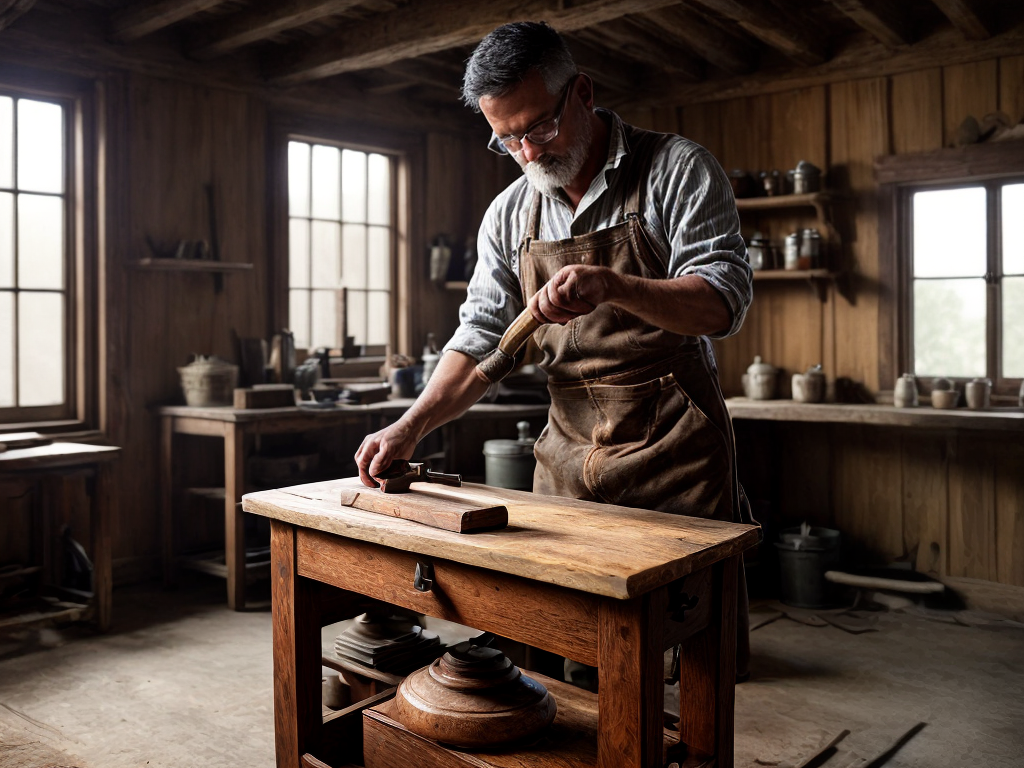
Restoring antiques is like breathing new life into a cherished piece of history. It’s a delicate art form that requires skill, patience, and a deep appreciation for the past. Through the meticulous process of woodwork restoration, we have the incredible opportunity to uncover the untold stories and secrets that lie beneath the surface. From intricate carvings to weathered finishes, every detail tells a tale of a bygone era. In this discussion, we will explore the importance of restoring antiques, the techniques used to bring them back to their former glory, and the significance of preserving their authenticity. Prepare to be captivated by the beauty and significance of these restored treasures.
The Importance of Restoring Antiques
Restoring antiques is an essential practice in preserving our rich historical heritage. The value of antique restoration cannot be overstated, as it allows us to maintain and appreciate our cultural heritage for future generations. By restoring antiques, we ensure that these valuable pieces of history are not lost or forgotten.
Preserving cultural heritage is crucial because it connects us to our past, providing a sense of identity and continuity. Antiques offer a glimpse into different eras, styles, and craftsmanship techniques, reflecting the values and traditions of our ancestors.
Antique restoration involves meticulously repairing and reviving old furniture, artworks, and decorative items, often using traditional techniques and materials. This process requires expertise, skill, and a deep understanding of historical context. By restoring antiques, we not only enhance their aesthetic appeal but also prolong their lifespan, ensuring their longevity for future generations to appreciate.
Furthermore, antique restoration contributes to the economy by creating job opportunities for skilled artisans and craftsmen. It also fosters a sense of community and pride, as individuals come together to preserve and showcase their cultural heritage.
Uncovering Hidden Stories Through Woodwork
Woodwork in antique pieces holds the key to unlocking fascinating stories from the past. As a restorer of antiques, I have had the privilege of unearthing forgotten secrets and revealing the past through the intricate details found in the woodwork. Each piece carries a unique history, waiting to be discovered by those who have the knowledge and expertise to interpret it.
When examining antique furniture, I pay close attention to the craftsmanship and design of the woodwork. The carvings, inlays, and even the type of wood used can provide valuable insights into the time period, cultural influences, and the social status of the original owner. For example, a piece with intricate floral motifs may suggest a connection to the Art Nouveau movement of the early 20th century, while a piece made from rare and exotic woods could indicate wealth and luxury.
Techniques for Restoring Antique Woodwork
To effectively restore antique woodwork, one must employ a combination of traditional techniques and modern innovations. Woodwork preservation techniques play a crucial role in maintaining the quality and integrity of antique furniture. These techniques involve careful cleaning, repairing, and refinishing to bring back the original beauty and functionality of the piece.
When restoring antique woodwork, it is important to start with a thorough assessment of the piece. This includes identifying any structural issues, such as loose joints or missing parts, and determining the best course of action for repair. Traditional techniques, such as using hide glue for joints and hand-cutting replacement parts, can help maintain the authenticity of the furniture.
In addition to traditional methods, modern innovations have also revolutionized the process of restoring antique woodwork. Advanced tools and equipment, such as electric sanders and precision cutting tools, can help achieve more precise and efficient results. New finishes and sealants have also been developed to provide better protection and enhance the longevity of the restored woodwork.
Restoring antique furniture requires a delicate balance between preserving its historical value and ensuring its functionality for modern use. By combining traditional techniques with modern innovations, woodwork restoration experts can breathe new life into these valuable pieces of history, preserving their beauty and stories for generations to come.
Preserving the Authenticity of Antiques
Preserving the authenticity of antiques involves meticulous attention to detail and a deep understanding of their historical significance. When restoring antique furniture, it is crucial to preserve the original features, materials, and craftsmanship that make each piece unique. By using techniques for preserving woodwork, we can maintain the integrity and value of these cherished artifacts.
One essential aspect of preserving authenticity is ensuring that any repairs or replacements are done in a way that is consistent with the time period of the piece. This means using traditional methods and materials whenever possible, such as hand-cut joinery and natural finishes. It also requires careful research and consultation with experts to ensure historical accuracy.
To better understand the importance of preserving authenticity, let’s take a closer look at the following table:
| Authenticity Aspect | Importance |
|---|---|
| Original Materials | High |
| Craftsmanship | High |
| Historical Accuracy | High |
As you can see, each aspect holds significant importance in preserving the authenticity of antiques. By adhering to these principles, we honor the history and craftsmanship of these remarkable pieces, ensuring they will be cherished for generations to come.
Showcasing the Beauty of Restored Antiques
With careful restoration, antique furniture can be transformed into captivating showcases of timeless beauty. When reviving forgotten treasures, it is essential to highlight the craftsmanship that went into creating these pieces. Restored antiques not only serve as functional furniture but also as works of art that tell a story of the past.
The beauty of restored antiques lies in their ability to transport us back in time. Through meticulous restoration techniques, the original craftsmanship is illuminated, allowing us to appreciate the skill and artistry of the past. Whether it is the intricate carvings on a Victorian sideboard or the delicate inlay work on a Regency table, restored antiques offer a glimpse into the mastery of the artisans who created them.

